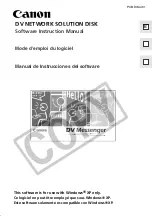
For outbound traffic, the NAT router translates the inside local address (or
address/port) into the inside global address (or address/port), either through a statically
defined translation or dynamically created translation. For inbound traffic, a
translation must be found to revert the inside global address (or address/port) into
the inside local address (or address/port), or the packet is not routed into the inside
network.
NOTE:
Dynamic inside source translations are established by outbound traffic.
You use inside source translation in traditional and bidirectional NAT configurations.
Outside Source Translation
Outside source translation is used in NAT configurations only when addresses of
external hosts might create a conflict on the private network. This complementary
translation process is performed on the opposite addressing fields in the IP packet.
When an outside host sends a packet to the inside network, the NAT router translates
the source information (either the source address or the source address/port pair)
and, in the outbound direction, restores the original information (this time operating
on the destination address or address/port pair).
For inbound traffic, the NAT router translates the outside global address (or
address/port) into the outside local address (or address/port), either through a statically
defined translation or dynamically created translation. For outbound traffic, a
translation must be found to revert the outside local address (or address/port) into
the outside global address (or address/port), or the packet is not routed into the
outside network.
NOTE:
Dynamic outside source translations are established by inbound traffic.
You use outside source translation along with inside source translation to configure
twice NAT.
Address Assignment Methods
NAT uses one of two methods to assign a translated IP address: static translation or
dynamic translation.
Static Translations
You enter static translations as direct configuration settings that remain in the
translation table until you remove them. You use static translations when you must
initiate connections from both the inside and outside interfaces, or when the
translation is not subject to change.
68
■
Address Assignment Methods
JUNOSe 11.0.x IP Services Configuration Guide
Содержание JUNOSE 11.0.X IP SERVICES
Страница 6: ...vi...
Страница 8: ...viii JUNOSe 11 0 x IP Services Configuration Guide...
Страница 18: ...xviii Table of Contents JUNOSe 11 0 x IP Services Configuration Guide...
Страница 20: ...xx List of Figures JUNOSe 11 0 x IP Services Configuration Guide...
Страница 22: ...xxii List of Tables JUNOSe 11 0 x IP Services Configuration Guide...
Страница 28: ...2 Chapters JUNOSe 11 0 x IP Services Configuration Guide...
Страница 138: ...112 Monitoring J Flow Statistics JUNOSe 11 0 x IP Services Configuration Guide...
Страница 286: ...260 Monitoring IP Tunnels JUNOSe 11 0 x IP Services Configuration Guide...
Страница 312: ...286 Monitoring IP Reassembly JUNOSe 11 0 x IP Services Configuration Guide...
Страница 357: ...Part 2 Index Index on page 333 Index 331...
Страница 358: ...332 Index JUNOSe 11 0 x IP Services Configuration Guide...















































